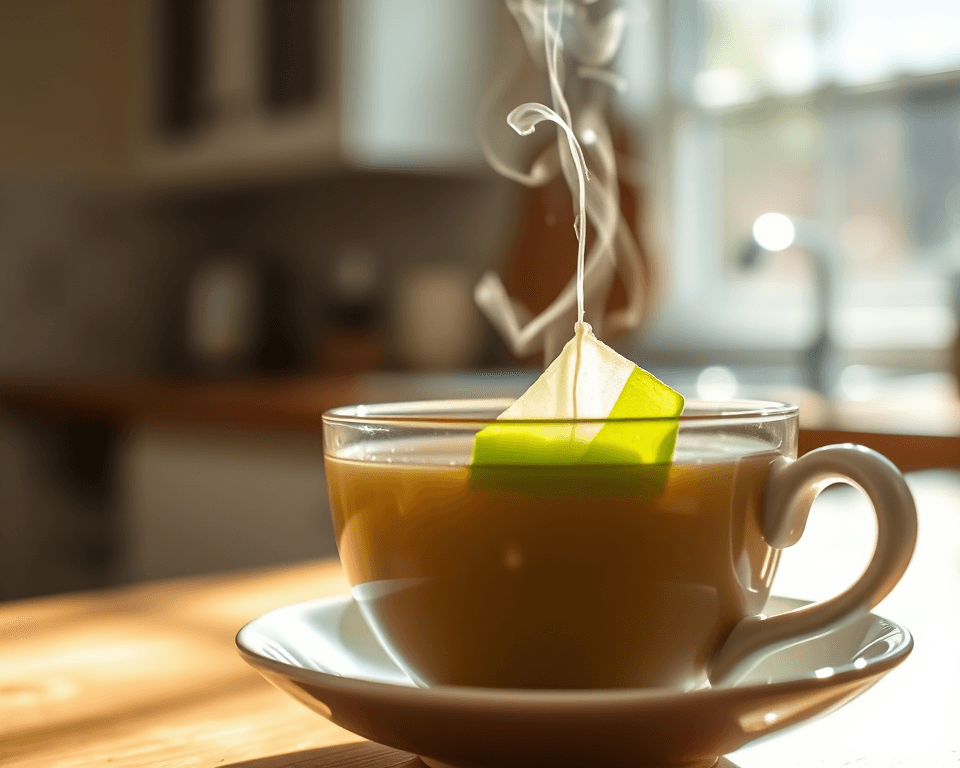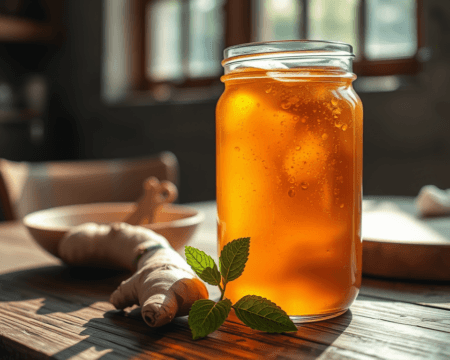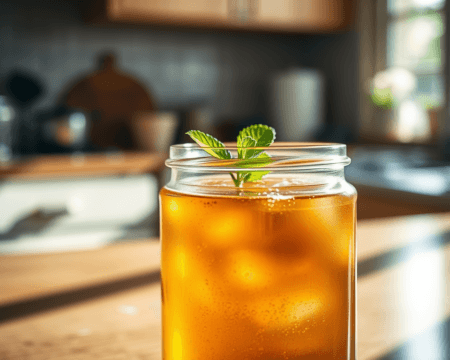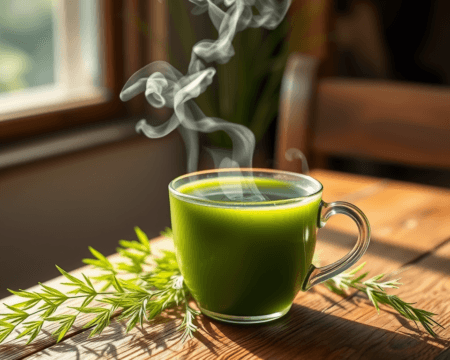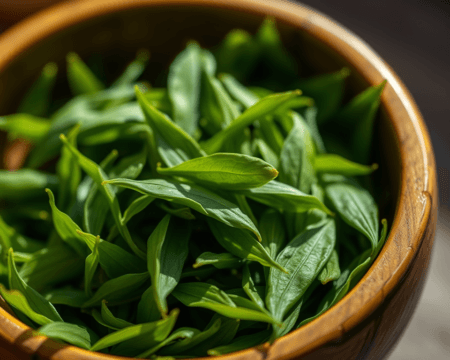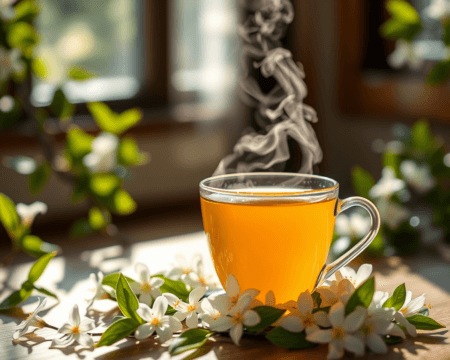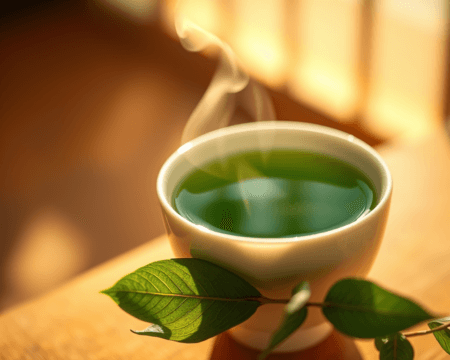Brewing tea might seem simple, but the right temperature can make or break your cup. Think about it—grab a bag of that fancy green tea you’ve been stashing away, pour hot water, and plop the bag in. You expect perfection, but what if those flavors don’t pop? What if that supposed health boost vanishes? Welcome to the world where temperature matters. It’s time to gear up for your ultimate brewing journey.
Key Takeaways:
- Different tea types demand different brewing temperatures for optimal flavor.
- Use a digital thermometer to measure water temperature accurately.
- Understanding regional preferences can enhance your tea experience and appreciation.
The Optimal Temperature Range for Different Tea Types
Green Tea: Ideal Brewing Temperatures
If you think all green teas are created equal, think again! We’ve got Japanese green tea and Chinese green tea, both vying for your attention but requiring different temperatures to showcase their unique flavor profiles. Generally, green teas are temperature sensitive and typically brew best at around 160°F to 180°F (70°C to 80°C). This is where you unlock the health benefits and rich flavors.
Too hot? You’ll scorch those delicate leaves, and nobody likes a bitter cup of green tea. A gentle touch is key!
Brewing Tips:
– For Japanese varieties like Sencha, stick closer to 160°F. This ensures smoothness and a sweet taste.
– For Chinese green teas like Longjing, you can push it up to the higher end of that scale for a bit more depth without losing its essence.
Play around with steeping time too! Aim for 2 to 3 minutes. You might want to experiment a bit, but consistency is crucial for that flavor extraction.
Black Tea: Brewing With Precision
Now we’re heating things up a bit! Black tea is your bold friend—think Assam or Darjeeling. These teas thrive at around 200°F to 212°F (93°C to 100°C). This temperature range extracts those rich, strong flavors you’re after.
Here’s a mind-blowing fact: the darker the tea, the higher the temperature it can handle! But don’t just toss the leaves in boiling water right away; you’ve got to master that brewing technique:
- Start by boiling your water and then let it sit for just a few seconds to cool if it hits the upper end.
- Steep your black tea around 3 to 5 minutes for maximum flavor depth. It’s the extraction magic moment!
Expect those flavor notes to explode. You’ll get hints of malty sweetness or fruity undertones without any bitterness—if you play your temperature cards right.
Herbal Tea: Finding Your Sweet Spot
Caffeine-free and oh-so-refreshing, herbal teas are a world of their own. These blends offer a range of aromas and flavors—think chamomile, peppermint, and hibiscus. To brew herbal tea perfectly, you need boiling water at about 212°F (100°C) since these infusions need hot water to release their goodness.
Each blend can differ, reflecting its variety-specific nature, but here’s a golden rule: steep your herbal teas for 5 to 7 minutes. This allows full flavor enhancement and maximizes the benefits of the herbs used.
Pay attention to steeping times—overdo it, and you’ll have a bitterness rivaling a breakup.
Methods for Measuring and Achieving Ideal Tea Temperatures
Using a Kitchen Thermometer Effectively
There’s no shame in using a digital thermometer to get it just right! I can’t stress enough how important accuracy is when it comes to measuring temperature. Invest in a good one. A typical digital thermometer costs around $10 to $20 and can make your brewing experience so much smoother.
This handy tool isn’t just for tea. You can use it for cooking, brewing coffee, or even checking your kids’ favorite soup. Get an instant-read thermometer that gives quick feedback, so you won’t be left guessing about the water’s heat.
Keep it close! With the right temperature, you can manage your brewing process with precision, ensuring you’re always hitting those sweet spots.
Boiling Water: Knowing When to Stop
Here’s the kicker: just because the kettle is screaming doesn’t mean it’s time to plunge your leaves in. After boiling water, it’s crucial to know when to let it cool just a little. Use your best judgment and maybe play some music while you wait, but don’t let it cool for more than a couple of minutes.
A simple strategy? Boil the water, let it simmer for short cooling periods, and then use that thermometer to hit your target range. This is about mastering the timing—patience is a virtue here.
Cultural Perspectives on Tea Brewing Temperature
Global Tea Traditions and Their Temperature Preferences
Tea isn’t just a drink; it’s a cultural experience. Across the globe, from Asian tea customs to British tea etiquette, brewing techniques vary significantly based on local traditions.
Cultures often have specific temperature preferences for their teas, affecting how they extract flavor. For instance, in China, many tea drinkers adhere strictly to the right temperatures for each tea type, emphasizing the respect for tea craftsmanship. Meanwhile, in Britain, a robust black tea steeped with boiling water is a staple, often accompanied by milk!
These cultural variations don’t just shape taste; they redefine our experience. Exploring regional styles can be a delightful journey that deepens your appreciation for this beloved beverage.
Impact of Climate on Local Brewing Practices
The climate plays a heavy role in local brewing practices. It turns out, your altitude can drastically affect how water boils! In high altitudes, water boils at a lower temperature, which might require a few tweaks to the brewing process.
For instance, if you’re living in the Rockies, where altitude can be above 7,000 feet, water may boil at about 198°F. That requires a bit of adaptation in your brewing methods to avoid getting that less-than-ideal cup of tea.
Understanding these local preferences can help you better connect with the flavors of your environment. Consider how the water you pour might be less than ideal at times and adjust accordingly!
Misconceptions About Tea Temperature and Flavor
Common Myths Debunked
Listen up—there’s a ton of misinformation flying around about tea brewing. One of the biggest misconceptions? “You can just brew all tea at the same temperature.” Wrong! Each tea comes with its own personality and needs tailored to its brewing temperature for optimum flavor extraction.
Another myth? “Teas with stronger flavors can withstand hotter brewing.” While it’s true that some teas can handle higher temps, brewing at invalid temperatures can strip them of their intended flavors.
Don’t just take my word for it; conduct your own little experiment. Brew the same black, green, or herbal tea at varying temperatures and watch those flavor profiles morph before your eyes.
The Science Behind Temperature and Flavor Extraction
Let’s get a bit sciencey, shall we? Brewing tea is all about chemistry—specifically, the extraction of flavor compounds. Each temperature alters how these compounds interact, leading to delightful (or not-so-delightful) teacups.
For instance, hotter water extracts catechins and tannins quickly, which can brighten dull flavors but also contribute to bitterness if left too long. On the flip side, lower temperatures won’t fully unlock the flavor. Finding that balance isn’t just a crapshoot; it’s a distilled art form backed by chemistry—one I encourage you to take seriously.
Temperature has a direct influence on the extraction process. So, understanding how to manipulate this can completely turn your tea game around. You’re not just making tea; you’re crafting a symphony of flavor with each steep.
Frequently Asked Questions
What is the ideal water temperature for different types of tea?
The ideal water temperature varies by tea type. Generally, white tea brews best at around 160-185°F, green tea at 175-185°F, oolong at 185-205°F, black tea at 200-212°F, and herbal tea can be boiled at 212°F. This helps unlock the best flavors and aromas.
How can I measure the water temperature accurately?
Using a digital thermometer is the best way to ensure you achieve the desired water temperature for your tea. Simply immerse the thermometer in the water before brewing and wait for it to stabilize for an accurate reading.
What happens if I brew tea at the wrong temperature?
Brewing tea at the wrong temperature can result in a less enjoyable cup. Higher temperatures can make tea taste bitter or astringent, especially for delicate varieties like green and white tea, while lower temperatures may not extract enough flavor from robust teas.
Do regional preferences for tea affect flavor profiles?
Yes, regional preferences can influence flavor profiles significantly. Different regions cultivate tea using unique practices and climate conditions, leading to distinct flavors. For instance, Japanese teas often have a grassy, umami flavor, while Chinese teas can be more floral or fruity.
Can I reuse tea leaves, and how does temperature affect this?
Yes, many tea varieties can be reused for multiple infusions. However, the water temperature should be adjusted for subsequent brews: use higher temperatures for stronger leaves (like oolong and black) and lower for delicate ones (like green and white) to balance flavors.
Is it essential to use filtered water for brewing tea?
While it’s not absolutely necessary, using filtered water can enhance the taste of your tea. Tap water with high mineral content or chlorine may alter the flavor, whereas filtered water tends to provide a cleaner, more neutral base for the tea.
What tools are recommended for optimal tea brewing?
In addition to a digital thermometer, consider using a quality kettle with temperature settings, a scale for measuring tea leaves, and a timer to steep for the correct duration. These tools can greatly improve your brewing precision and overall tea experience.
How should I store tea leaves to maintain flavor?
Tea leaves should be stored in a cool, dark place in an airtight container to protect them from moisture, light, and strong odors. Proper storage helps maintain their freshness and flavor for longer periods.
Can I blend different types of tea?
Yes, blending different types of tea can create unique flavors and enhance your tea experience. However, be mindful of brewing temperatures and steeping times for each type to ensure optimal taste from each variety in your blend.




